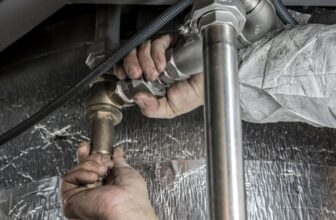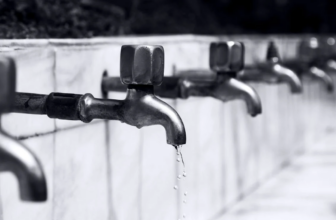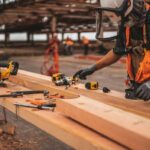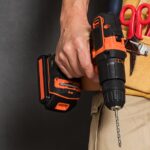
Signs Your Eavestrough Needs Repair: Early Indicators to Prevent Further Damage
Maintaining your home’s exterior is essential to its longevity, and one component that often gets overlooked is the eavestrough system. These channels serve a vital purpose: guiding rainwater away from your house to protect the roof, walls, and foundation from potential damage. Neglecting through upkeep, however, can lead to costly repairs and damage down the line. Fortunately, early signs often indicate when maintenance is needed, allowing you to address issues before they escalate.
In this article, we’ll walk you through some key indicators that your eaves dropping system may need attention, helping you prevent further damage to your home.
Visible Cracks or Splits
One of the most noticeable signs of a problem is visible cracks or splits in the eavestrough channels. At first glance, small cracks might not seem like a pressing issue. However, even minor splits can grow over time, allowing water to escape where it shouldn’t. This water can end up trickling down the sides of your home, leading to structural damage, staining, and even erosion around the foundation. If you spot any splits, it’s wise to reach out to experienced eavestrough contractors to assess the situation.
Peeling Paint or Rust Streaks
Peeling paint on or around your eavestroughs is a clear red flag. Most eavestroughs are designed to withstand weather, so peeling or rusting can indicate that water isn’t being efficiently directed away. When water sits in certain areas for too long due to clogs or misalignment, it can lead to rust, which gradually weakens the metal. Peeling paint and rust streaks should not be ignored, as they could signal larger problems within the system that require immediate repair.
Sagging or Pulling Away from the Roofline
If you notice sections of your eavestrough sagging or pulling away from the roofline, this is a strong indicator that the system is overloaded or improperly secured. Over time, debris buildup or an inadequate support system can cause this issue, resulting in strain on the system. When an eavestrough sags, it can’t effectively channel water, which leads to pooling and overflow, increasing the risk of water damage around your home. Professional eavestrough contractors can resecure these sections, ensuring the system remains efficient.
Water Pooling Around the Foundation
Water collecting around the base of your home after a rainstorm is one of the more serious warning signs. When eavestroughs don’t function as they should, they fail to direct water away from the foundation, which can lead to serious structural issues.

Over time, pooled water can weaken the foundation, leading to cracks and costly repairs. If you’re noticing this issue, it’s essential to have your eavestrough inspected to ensure water is being directed properly away from the home.
Plants Growing in the Eavestrough
Seeing plants sprouting from your eavestrough is a clear sign of debris buildup. When leaves, dirt, and seeds collect in the system and are left unattended, they create the perfect environment for plant growth. This debris adds significant weight to the eavestroughs, putting stress on the brackets and potentially leading to sagging or breaks. Routine cleaning and professional repair, when needed, can keep your eavestrough free from these unwanted guests.
Water Stains or Marks on Exterior Walls
Water stains on the sides of your home are often a telltale sign that your eavestroughs aren’t functioning correctly. Streaks or marks on exterior walls usually indicate that water is overflowing from the system, either due to clogs or poor alignment. If ignored, this can lead to mold growth and material decay on the walls. Keeping an eye on these marks and addressing them early with proper repair can save you from extensive damage to your home’s exterior.
Basement Leaks or Moisture Issues
Your eavestrough system plays a role in keeping your basement dry. If you start noticing dampness, leaks, or even minor puddling in your basement, it could mean that water isn’t being properly directed away from your foundation. This can happen if the eavestrough is clogged, cracked, or not installed at the correct angle. Repairing the eavestrough to ensure water flows away from your foundation is crucial for avoiding basement moisture issues, which can lead to mold and mildew growth if left unchecked.
Overflowing Water During Rainstorms
During heavy rains, your eavestrough should efficiently channel water away from the house. If you notice that water is pouring over the sides, it likely means that the system is clogged or improperly angled. Overflows are common in systems with excess debris, which restricts the flow of water. Regular maintenance and, when necessary, professional eavestrough repair can ensure that your system can handle heavy rainfall without spilling over.
Frequent Clogging Despite Regular Cleaning
If you’re cleaning your eavestroughs regularly but still experiencing clogs, there may be a structural issue. For instance, improperly installed sections can lead to water pooling in certain areas, which then attracts debris and creates frequent blockages. Additionally, old or damaged eavestroughs might develop leaks or misshapen areas that exacerbate clogs. An assessment by professional eavestrough contractors can determine if a more extensive repair or replacement is required.
Sections That Have Detached or Are Missing
An eavestrough system should be continuous to efficiently channel water away from the house. Missing sections or portions that have completely detached are clear signs that repair is necessary.

Not only do these gaps render the system ineffective, but they also allow water to fall directly to the ground, which can lead to foundation erosion. Missing sections typically indicate either severe damage or a long-overdue replacement, so it’s best to act quickly to have these issues addressed.
Ice Dams Forming in the Winter
In colder regions, ice dams can be a major issue. These ice formations are caused when heat escapes through the roof, melting snow that then refreezes at the edge of the eavestroughs. This buildup can cause water to back up, leading to leaks inside the home and putting additional stress on the system. If ice dams are a recurring issue, it may indicate a need for improved insulation or an upgrade to the eavestrough system to prevent future blockages.
Pooling Water Inside the Eavestrough
If you notice standing water within your eavestroughs even days after it has rained, it could mean that they’re not properly angled. An eavestrough should have a slight slope to allow water to flow toward the downspouts. When the angle is off, water pools and sits, creating a breeding ground for insects and accelerating material degradation. Adjusting the pitch is a common repair that can make a significant difference in the efficiency of your eavestrough system.
Noticeable Damage to Fascia or Soffit
Your eavestroughs are directly attached to the fascia boards, and if they’re in disrepair, it can lead to damage to both the fascia and soffit. Rotting wood or peeling paint on these areas often means that the eavestroughs have been allowing water to seep onto them. Addressing eavestrough issues promptly can help prevent expensive repairs to these connected areas, preserving the structural integrity of your home’s roofline.
Keeping Your Eavestroughs in Top Shape
Spotting these warning signs early and addressing them can save you time, stress, and significant expenses down the line. While it may be tempting to handle minor repairs yourself, eavestrough maintenance is best handled by professionals who can provide thorough and lasting solutions. Reliable eavestrough contractors have the expertise to assess your system’s health and recommend the best course of action, whether it’s a simple cleaning, minor repair, or a more extensive overhaul.
By staying vigilant for these early indicators, you can ensure that your eavestroughs remain effective and keep your home well-protected from water damage.



















































































